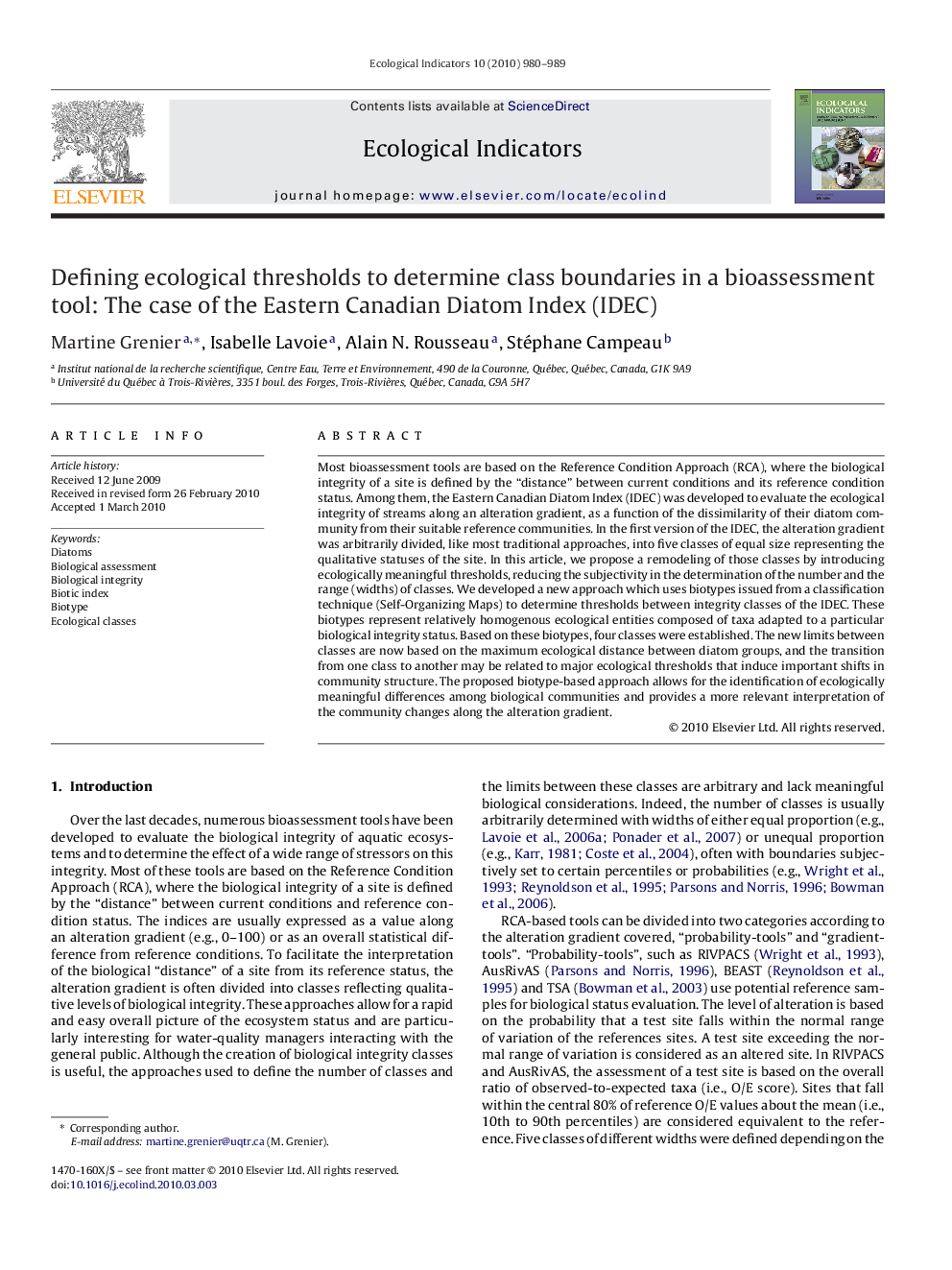| Article ID | Journal | Published Year | Pages | File Type |
|---|---|---|---|---|
| 4374249 | Ecological Indicators | 2010 | 10 Pages |
Most bioassessment tools are based on the Reference Condition Approach (RCA), where the biological integrity of a site is defined by the “distance” between current conditions and its reference condition status. Among them, the Eastern Canadian Diatom Index (IDEC) was developed to evaluate the ecological integrity of streams along an alteration gradient, as a function of the dissimilarity of their diatom community from their suitable reference communities. In the first version of the IDEC, the alteration gradient was arbitrarily divided, like most traditional approaches, into five classes of equal size representing the qualitative statuses of the site. In this article, we propose a remodeling of those classes by introducing ecologically meaningful thresholds, reducing the subjectivity in the determination of the number and the range (widths) of classes. We developed a new approach which uses biotypes issued from a classification technique (Self-Organizing Maps) to determine thresholds between integrity classes of the IDEC. These biotypes represent relatively homogenous ecological entities composed of taxa adapted to a particular biological integrity status. Based on these biotypes, four classes were established. The new limits between classes are now based on the maximum ecological distance between diatom groups, and the transition from one class to another may be related to major ecological thresholds that induce important shifts in community structure. The proposed biotype-based approach allows for the identification of ecologically meaningful differences among biological communities and provides a more relevant interpretation of the community changes along the alteration gradient.
